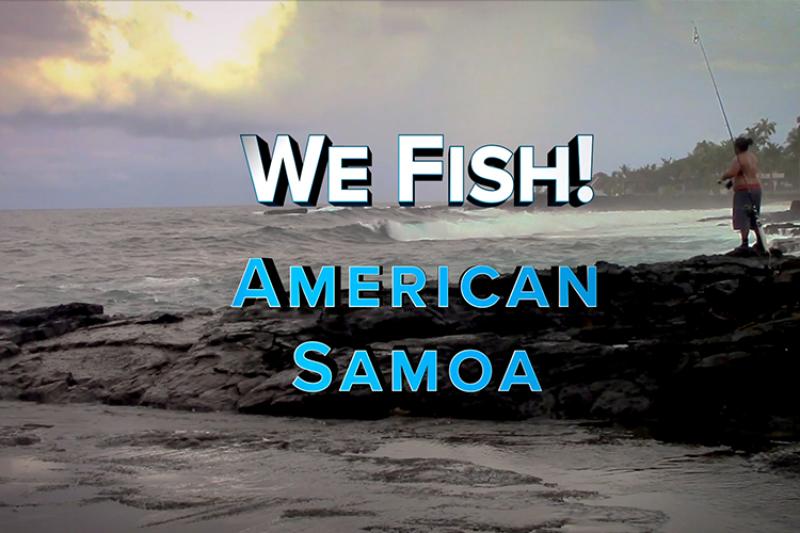NOAA Fisheries is proud to release We Fish! American Samoa. We collaborated with local fishermen and fishing communities to tell the story of recreational and non-commercial fishing in American Samoa. The video offers a lens into Samoan culture, and gives a glimpse into the different types of fishing methods common in the territory. Interviews with local fishermen help stress the importance of these activities in daily life.
“It is an expected part of life that we rely on the ocean and on the land for food and for provisions of families’ livelihood,” says Sili Satatua from the Village of Fagasa on Tutuila Island, American Samoa.
We Fish! American Samoa reveals the traditional Samoan practice of sharing within the community, and the need to act as stewards of local marine resources. It highlights the importance of non-commercial and recreational fishing—both in American Samoa and across the Pacific Islands region. It is a resource for food, an outlet for fun and education, and a way to perpetuate cultural family practices and the conservation of marine resources for future generations.
Fishing as a Way of Life
Non-commercial and recreational fisheries contribute heavily to the communities and economies across American Samoa, the Commonwealth of the Northern Mariana Islands (CNMI), Hawaiʻi, and Guam. Catch from these fisheries contribute to local seafood markets and subsistence, and is often shared with friends, family, and the larger community.
Fishing is a way of life in the Pacific Islands. Recreational and non-commercial fishing knowledge and activities often serve as an important way to pass on cultural and social traditions. These activities also educate and empower communities to help restore and protect our ocean’s resources for future generations.
In American Samoa, communities are deeply rooted in the traditions of fishing. Recreational and non-commercial fishing are a large part of the past and present culture. Much of the Territory’s 55,000 residents rely on seafood as a main source of protein.
In American Samoa, residents have passed local fishing traditions down for generations. Traditional fishing practices like throwing net (kili or tili), casting (fai ‘ofe), and sling spearfishing (tuli a‘au) still run strong in the islands. Some villages in American Samoa even have their own unique, communal fishing traditions.
Faʻa Samoa (the Samoan way) retains the identity and cultural respect throughout the islands’ fishing traditions. Some of the older traditions have been supplemented with more modern equipment. Older cultural harvesting methods, such as fish traps, gleaning (collecting invertebrates in the shallows), palm frond nets, and slingshot fish spears, are still taught within the villages.
We Fish! American Samoa is just the start of this important conversation about recreational and non-commercial fishing in the Pacific Islands region. Stay tuned: in the near future, we hope to bring you similar vignettes for the CNMI, Guam, and Hawaiʻi. Because in the Pacific Islands, We Fish!
The We Fish! video series is a product of the Mid-Level Leadership Program at the Pacific Islands Regional Office (PIRO). It is coming to life through a collaboration with a group of Program participants and the PIRO Communications Team.



